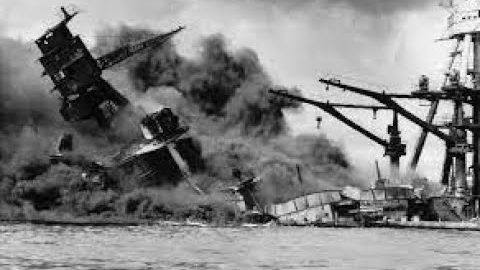Crash course on The reason Japan attacked Pearl Harbor, What were the consequences for Japan?
10 View
Share this Video
- Publish Date:
- March 18, 2023
- Category:
- Pearl Harbor
- Video License
- Standard License
- Imported From:
- Youtube
Tags

On December 7th, 1941, the Japanese launched a surprise attack on the United States naval base at Pearl Harbor in Hawaii, which led to the entry of the United States into World War II. The reasons for the attack can be traced back to a combination of political, economic, and military factors.
Political Factors:
Japan's political leadership was dominated by military figures who were expansionists and believed in the concept of "Asia for the Asians." They saw the United States as a rival in the Pacific, and wanted to eliminate its presence in the region. Furthermore, Japan had been trying to establish its dominance in Asia by invading China and Southeast Asia. However, the United States had imposed economic sanctions on Japan, including an oil embargo, in response to its aggression in the region. These sanctions were seen as a threat to Japan's national security and sovereignty.
Economic Factors:
Japan was heavily dependent on imported resources such as oil, steel, and rubber, which it needed to fuel its economy and military expansion. The United States was the main supplier of these resources, but the economic sanctions had cut off Japan's supply. Japan believed that by attacking the United States, it could gain control of the resources it needed in Southeast Asia and the Pacific.
Military Factors:
Japan's military leadership believed that a surprise attack on the United States would be a decisive blow that would cripple the US Navy and prevent it from interfering with Japan's plans for expansion in the Pacific. The Japanese had developed a new naval strategy known as "Kantai Kessen," or "decisive battle," which called for a single, all-out attack to destroy the enemy fleet.
The attack on Pearl Harbor was a tactical success for Japan. They destroyed or damaged eight battleships, ten other ships, and nearly 200 aircraft, while only losing 29 aircraft and five midget submarines. However, it ultimately proved to be a strategic mistake. The attack united the American people behind the war effort, and led to the United States declaring war on Japan the following day. This brought the full military and economic might of the United States into the war, which Japan was ill-equipped to handle.
The consequences for Japan were severe. The United States declared war on Japan, and soon after, Germany and Italy declared war on the United States. This led to a global conflict that Japan was ill-prepared to fight. Japan was forced to fight a multi-front war, which stretched its resources thin. The United States launched a series of counterattacks, including the famous Doolittle Raid on Tokyo, which boosted American morale and damaged Japan's prestige.
The war also had a devastating impact on Japan's civilian population. The United States launched a bombing campaign that destroyed much of Japan's infrastructure and killed hundreds of thousands of civilians. The war ended with the dropping of atomic bombs on Hiroshima and Nagasaki, which killed over 200,000 people and led to Japan's surrender.
Despite the devastation caused by the war, Japan emerged as a major economic power in the post-war period. The country's economy was rebuilt with the help of American aid and investment, and Japan became known for its innovative technology and manufacturing. Today, Japan is one of the world's leading economies and a major player in global politics.
Interesting stories and examples:
- One interesting fact about the attack on Pearl Harbor is that it was planned in complete secrecy. The Japanese had used diplomatic codes to communicate with their embassy in Washington, D.C., but the United States had broken those codes and was intercepting their messages. However, the US intelligence community did not realize the significance of the messages until it was too late.
- Another interesting story is the role of the USS Arizona in the attack. The USS Arizona was hit by a bomb that penetrated its armor and exploded in its forward ammunition magazine.
- The explosion caused the ship to sink rapidly, killing 1,177 of the 1,512 crew members on board. The wreckage of the USS Arizona is still at the bottom of Pearl Harbor today, and it is now a national memorial that serves as a reminder of the attack and the sacrifice of those who lost their lives.
*** Start planning your next global adventure with ease and convenience with our booking.com referral link: https://www.booking.com/index.html?aid=7989335 as a great choice to plan your next trip! You can find and book flights, hotels, cars, and local attractions all in one place, and their price match guarantee ensures you're getting the best deal. Thank you for kind support our Anhub Metaverse channel and please watch more interesting videos here!
Did you miss our previous article...
https://trendinginhawaii.com/pearl-harbor/pearlsnap-pimps-ep-3-with-handtight-garage














